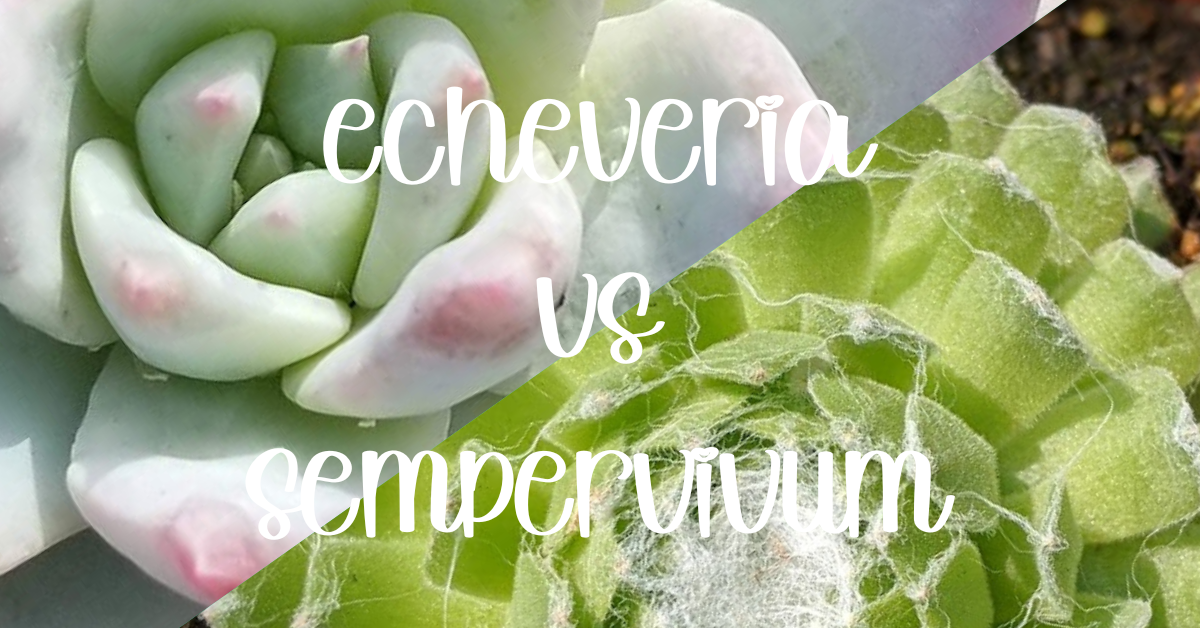Echeveria vs Sempervivum: both are genera of flowering plants in the Crassulaceae family, which includes a wide variety of succulents known for their ability to tolerate dry conditions. While both genera are popular choices for indoor and outdoor plants, they have a few key differences in terms of their appearance, care requirements, and growth habits.
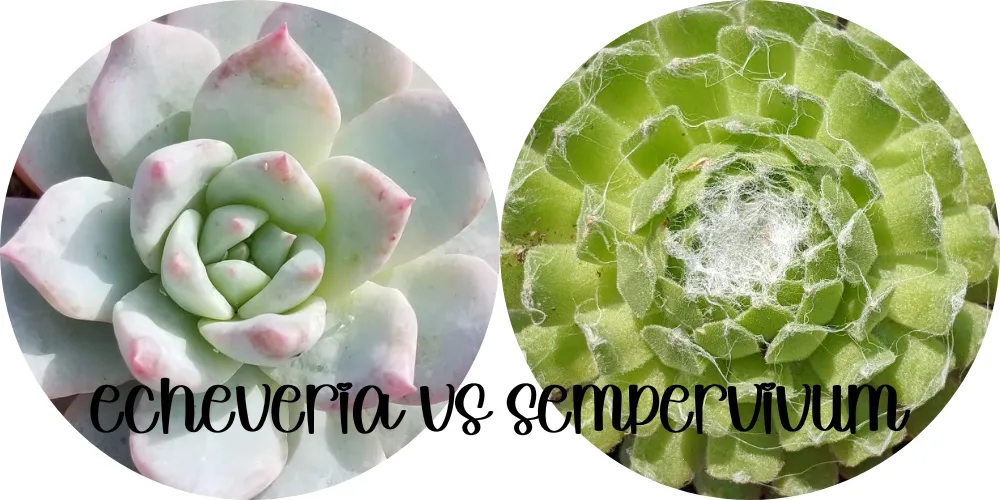
Echeveria and Sempervivum belong to the same family, but there are a few differences between them. Echeveria plants have rosette-shaped leaves that grow in a tight arrangement, whereas Sempervivum leaves grow in a more open, star-shaped rosette. Echeveria leaves are often smooth and waxy, while Sempervivum leaves are covered in small, fuzzy hairs. In terms of color, Echeveria comes in a wide range of shades, from bright green to purple, blue, pink, and even black. Sempervivum, on the other hand, is mostly known for its green and red hues.
You might also like: The ONE Simple Thing Succulents Need to Thrive and 5 Reasons Why Wind is It
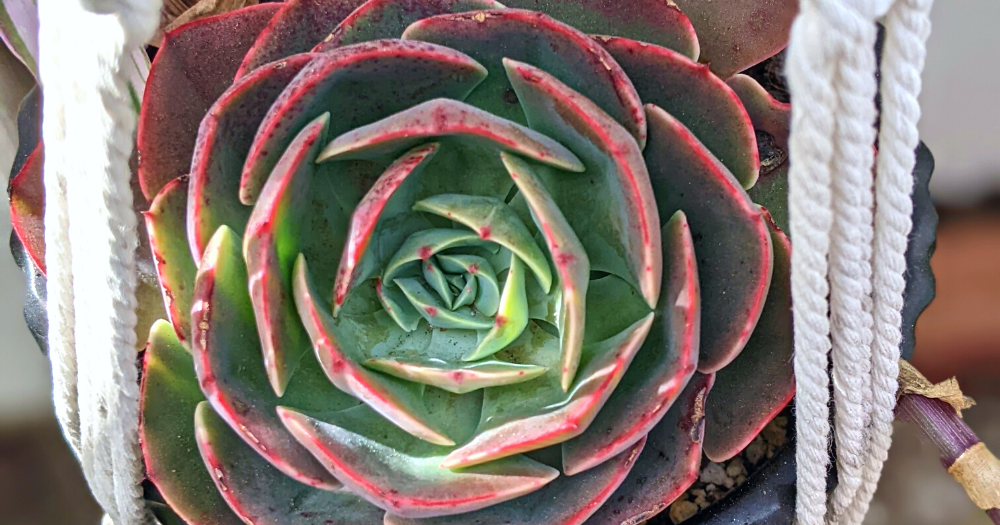
Echeveria vs Sempervivum: Native Habitat/Origin
Echeveria is native to Central and South America, while Sempervivum is native to Europe, North Africa, and western Asia. Echeveria grows in hot, arid regions and can tolerate high temperatures, while Sempervivum thrives in cooler, mountainous areas.
You might also like: Native Habitats of Succulents: Explore 3 Incredibly Diverse Environments
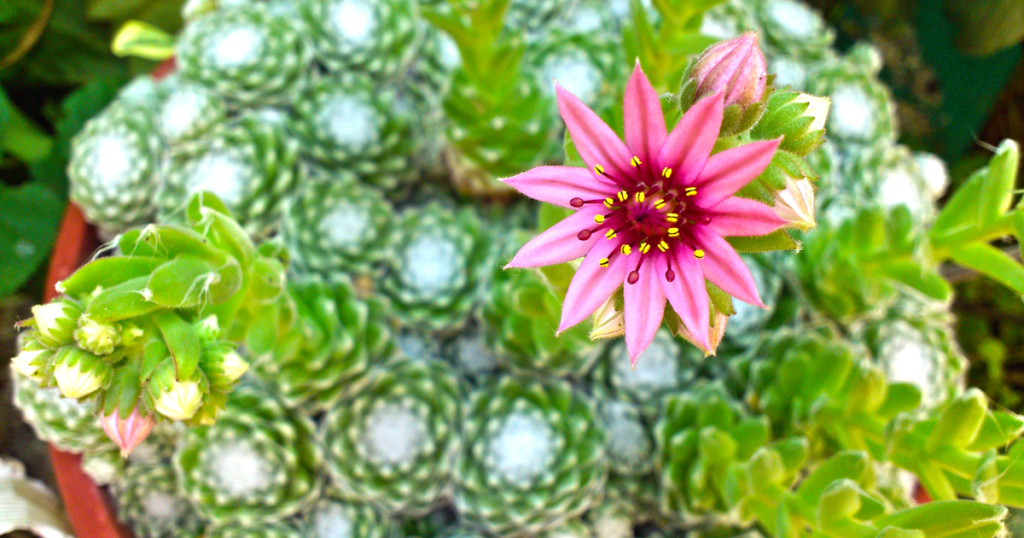
Echeveria vs Sempervivum: How to Water & Fertilize
When it comes to watering, both Echeveria and Sempervivum prefer infrequent but deep watering. Allow the soil to dry out completely before watering again, as overwatering can lead to root rot. Fertilize once a month during the growing season with a balanced fertilizer diluted to half strength. It’s best to avoid fertilizing during the winter months when the plants are dormant.
You might also like: Succulent Fertilizer: The Ultimate Guide to Healthy Succulents + 8 DIY Fertilizer Recipes
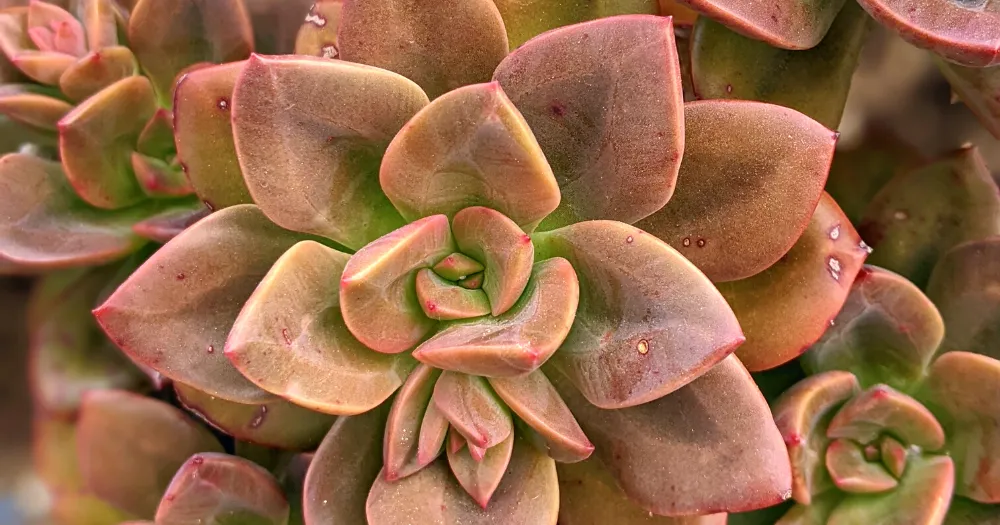
Echeveria vs Sempervivum: Soil
Echeveria and Sempervivum both require well-draining soil that is gritty and porous. Amend your potting mix with Turface, pumice, perlite, and coarse sand to ensure adequate drainage. Terracotta pots are also a great choice as they allow for better air circulation and help to prevent overwatering.
You might also like: Succulent Soil: Ultimate Guide & 4 DIY Recipes to Keep Your Succulents Happy and Healthy
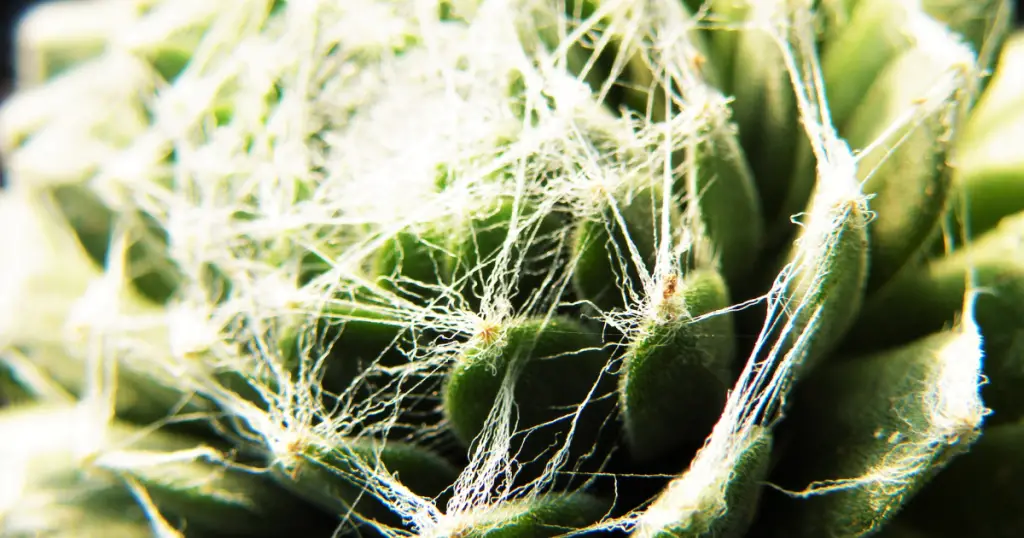
Echeveria vs Sempervivum: Propagation
Propagating Echeveria and Sempervivum is an easy and rewarding process. Both succulent types can be propagated through stem or leaf cuttings. For stem cuttings, take a healthy stem from the mother plant and let it dry out for a day or two to callus over before planting it in well-draining soil. For leaf cuttings, remove a healthy leaf from the mother plant and let it dry out for a day or two before placing it on top of the soil mix. After a few weeks, roots will start to grow from the base of the leaf and a new rosette will emerge.
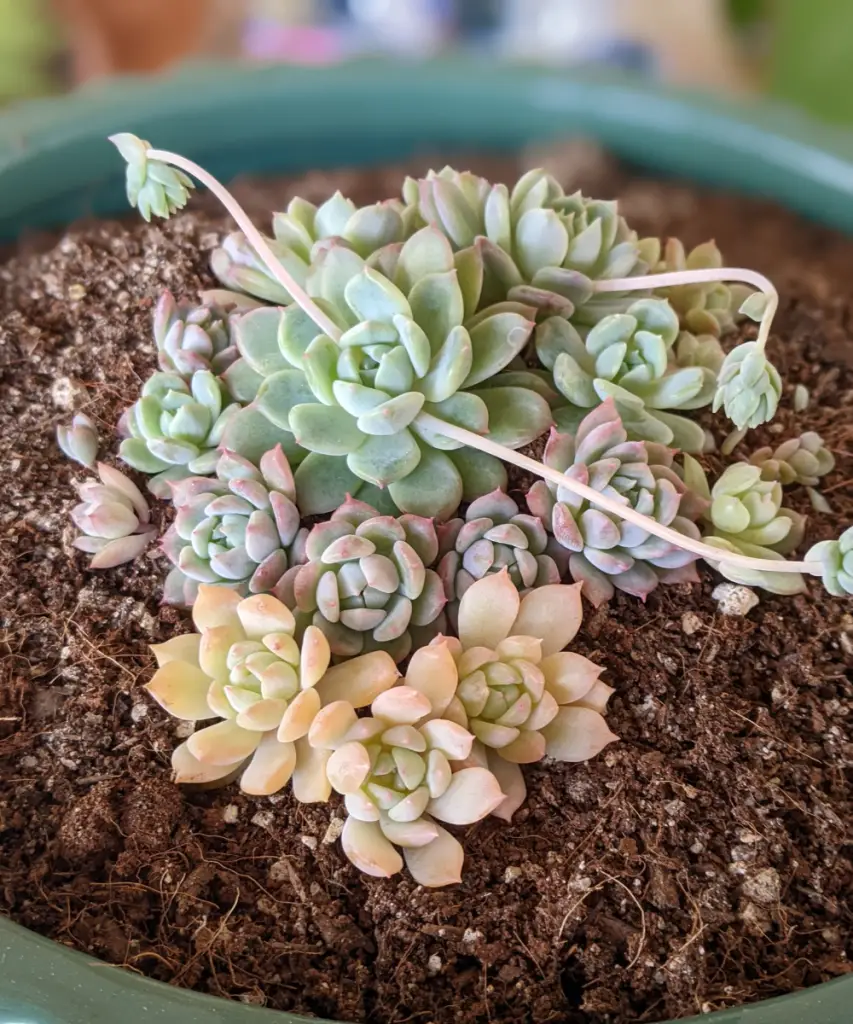
You might also like: How to Behead an Echeveria and Cut Off Bloom Stalks: An Easy 6 Step How-To Guide
Sempervivum, being monocarpic, produce offsets or “chicks” from the mother plant that can be gently pulled apart and replanted in separate pots. These offsets grow into new plants that will eventually flower and produce their own chicks. Echeveria, on the other hand, are not monocarpic and will continue to produce rosettes indefinitely, making them an excellent choice for propagation through division. Simply divide a healthy rosette from the mother plant and replant it in well-draining soil.
You might also like: Propagating Succulents 4 Ways: The Best Guide Ever
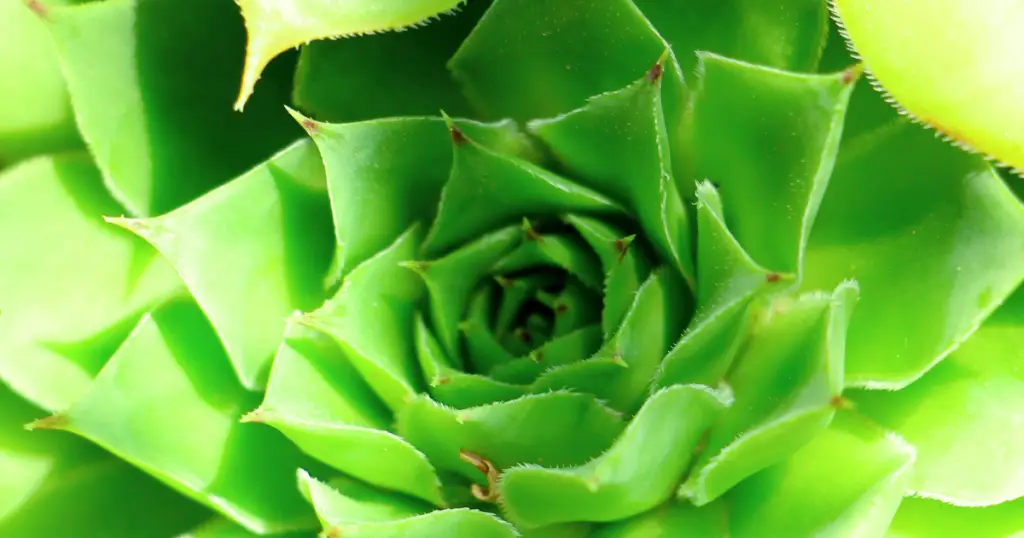
Echeveria vs Sempervivum: Hardiness Zone & Temperature
Echeveria is a warm-season plant and is not frost-tolerant, while Sempervivum is cold-hardy and can tolerate temperatures as low as -20°F. Echeveria is suitable for USDA hardiness zones 9 to 11, while Sempervivum can grow in zones 3 to 11.
You might also like: The 7 Hardiness Zones Where Succulents Easily Thrive
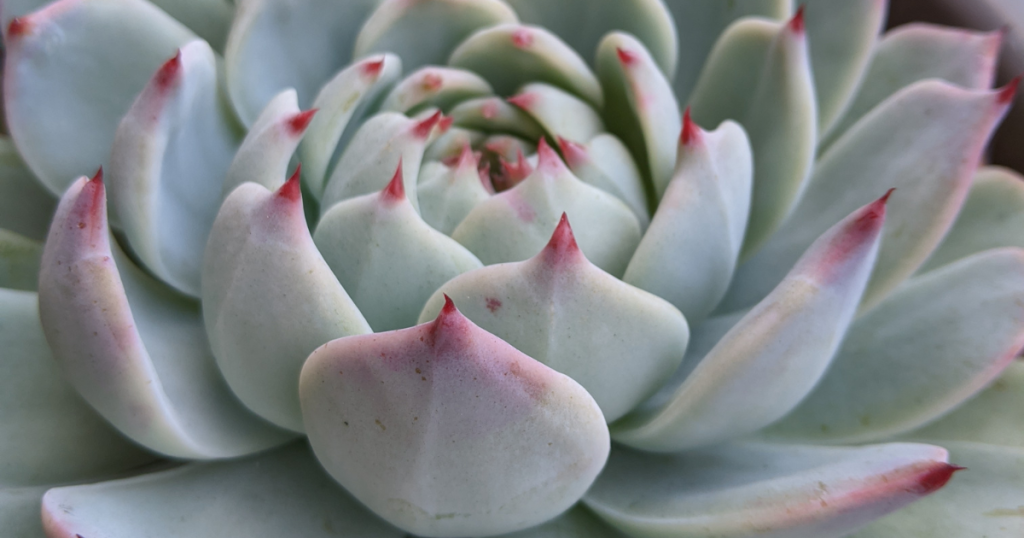
Echeveria vs Sempervivum: Common Pests, Problems & Solutions
Echeveria and Sempervivum are generally easy to care for, but they can be susceptible to mealybugs, spider mites, and aphids. If you notice any signs of infestation, isolate the affected plant and treat it with insecticidal soap or neem oil. Overwatering can lead to root rot, so make sure to let the soil dry out completely before watering again.
You might also like: 12 Succulent Pests and Diseases: Identification, Treatment, and Easy Prevention of Mealybugs, Thrips and More
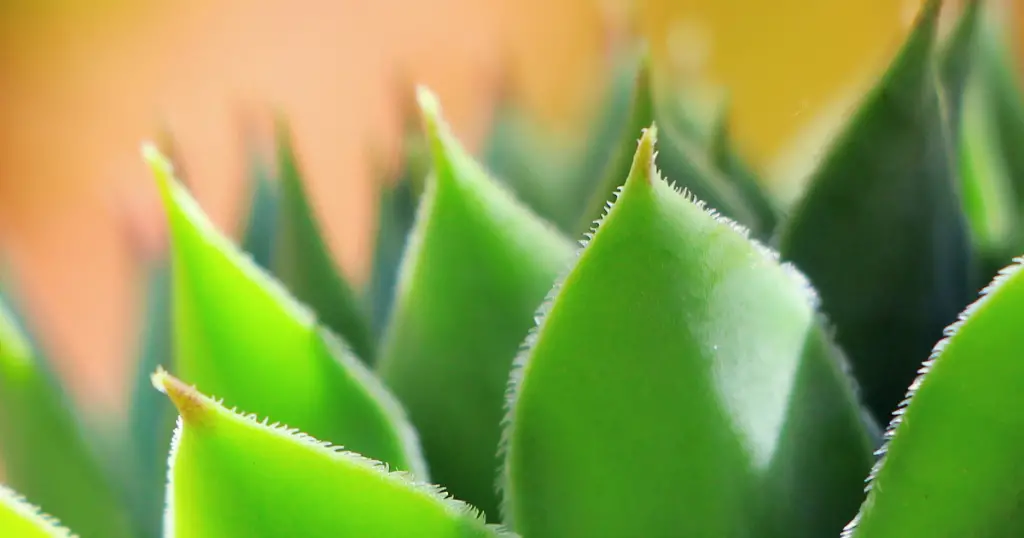
Echeveria vs Sempervivum: Are they poisonous or toxic?
Echeveria and Sempervivum are not toxic to humans or pets, making them safe to keep in your home.
Echeveria vs Sempervivum: Flowering Habits
Echeveria and Sempervivum have different flowering habits. Echeveria typically produce long, thin stems with small, bell-shaped flowers at the tips. The flowers can come in a variety of colors, including pink, red, yellow, orange, and white. Some species of Echeveria bloom in the winter, while others bloom in the summer. The flowers usually last for several weeks, and the plant may produce more than one flower stem at a time.
You might also like: Succulents in Winter: Can They Make It or Will They Get Killed by Snow?
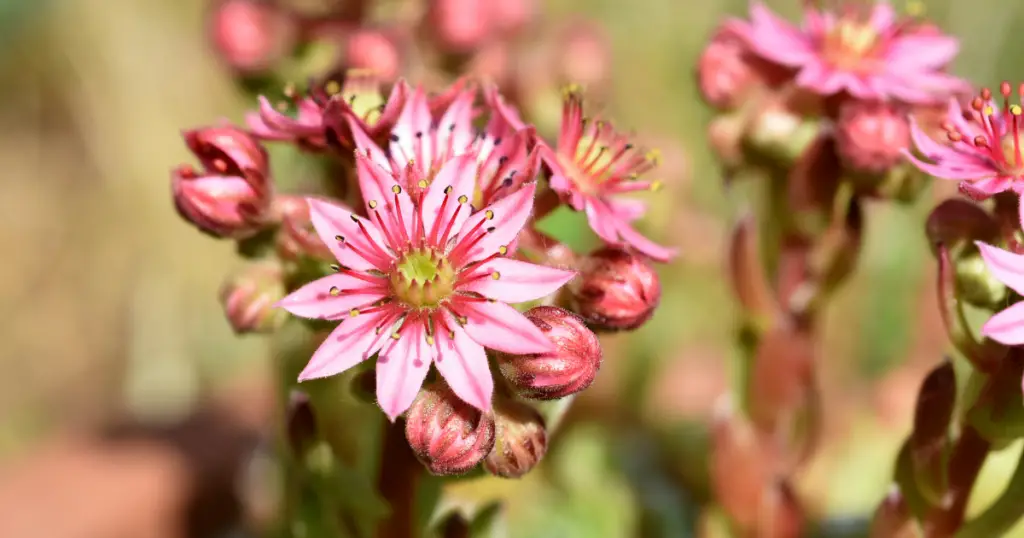
Sempervivum, on the other hand, are known for their unique rosette-shaped clusters of leaves, and their flowers are produced on tall, slender stalks that rise up from the center of the rosette. The flowers of Sempervivum are usually pink or red and can be quite showy. The blooming period can last for several weeks, and the plant may produce multiple flowering stalks at once. Unlike Echeveria, which can produce flowers at any time of the year, Sempervivum usually blooms in the summer.
You might also like: Summer Succulent Care: Keep Your Plants Happy During the Warm Months
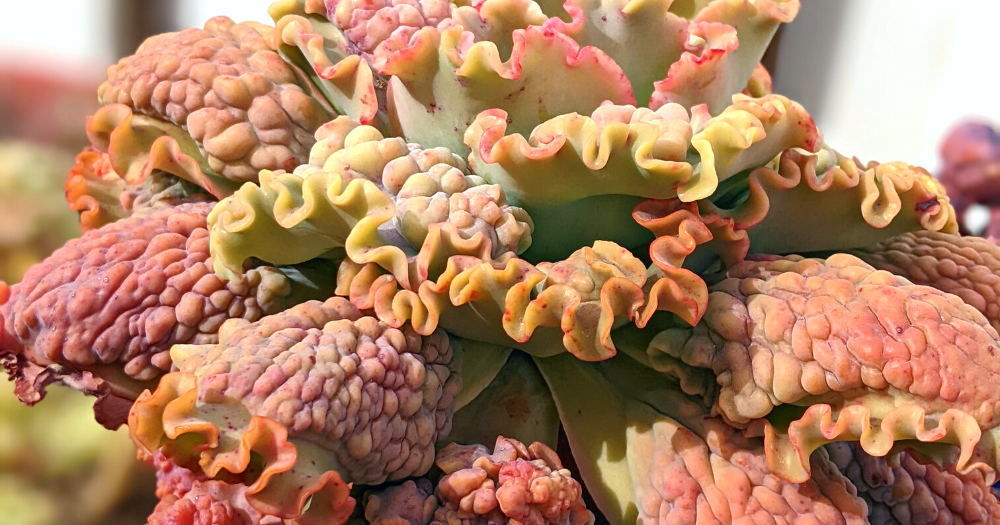
One major difference between echeveria and sempervivum is that sempervivum are monocarpic, while echeveria are not. This means that sempervivum will die after flowering, while echeveria can continue to live and produce new rosettes even after flowering.
You might also like: Monocarpic Succulents: The Ultimate Guide to Growing and Caring for These Unique Plants and 4 Ways You Might Be Able to Save Yours From a Death Bloom
Sempervivum typically take several years to reach maturity and bloom, and once they do, the central rosette will produce a tall flower stalk. After the plant has finished blooming, it will gradually decline and eventually die. However, sempervivum also produce offsets or “chicks” around the base of the dying plant, which can be easily separated and replanted to continue the cycle.
You might also like: Troubleshooting Yellowing Leaves on Your Succulent Plants
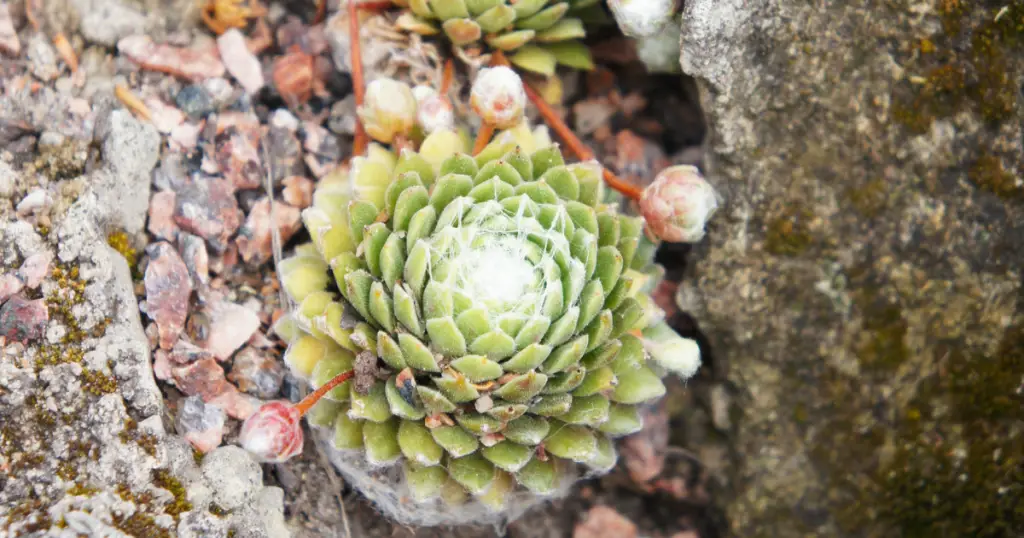
Echeveria, on the other hand, are not monocarpic and can continue to live and produce new rosettes even after flowering. The flower stalks of echeveria are typically shorter and more compact than those of sempervivum, and the flowers themselves may be more showy and colorful. After flowering, the rosette may appear smaller or more compact, but the plant will continue to grow and produce new leaves and rosettes.
You might also like: Efflorescence on Terracotta Pots: What It Is and 4 Simple Ways to Prevent It
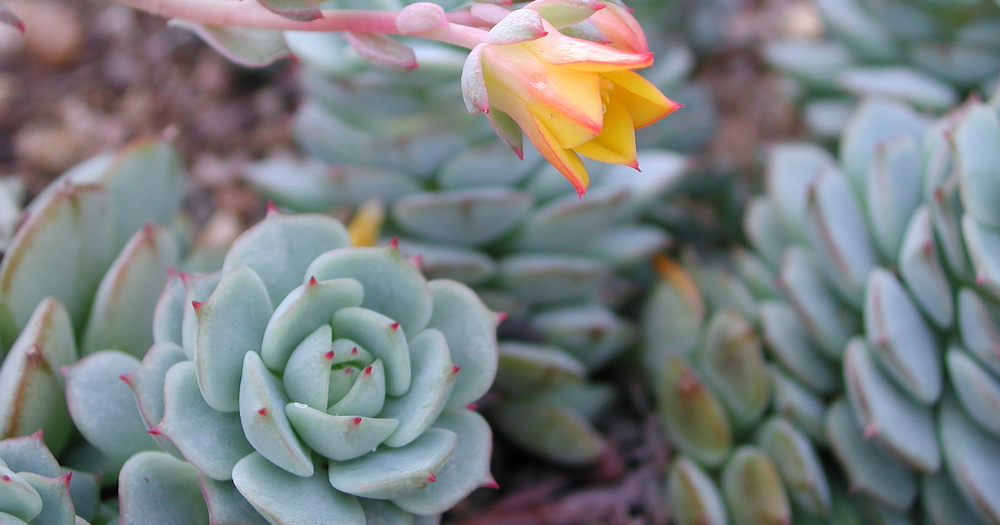
Echeveria vs Sempervivum: Additional Facts
- Echeverias are native to Mexico, Central and South America, while Sempervivums are native to Europe and Asia.
- Both Echeverias and Sempervivums are drought-tolerant and prefer well-draining soil.
- Echeverias are more commonly grown as houseplants or in containers, while Sempervivums are often used in rock gardens, alpine gardens, or as ground covers.
- Echeverias can be propagated by stem or leaf cuttings, while Sempervivums can be propagated by division or offsets.
- Both Echeverias and Sempervivums can bloom with small, colorful flowers in the summer, but they are primarily grown for their ornamental foliage.
- Echeverias and Sempervivums are non-toxic to humans and pets, making them great choices for indoor and outdoor gardens.
- Echeverias and Sempervivums can be grown in similar conditions, but it’s important to choose the right species or cultivars for your specific climate and growing conditions.
You might also like: Planting Succulents in the Ground vs. in Pots: Pros and Cons (2023)
Overall, both Echeverias and Sempervivums are unique and beautiful succulents that can add color and texture to any garden or indoor space. Understanding the differences between these two genera can help you choose the best plants for your needs and ensure their proper care and maintenance.
For more succulents that are hard to tell apart, click here.

Where to Buy Succulents Online

